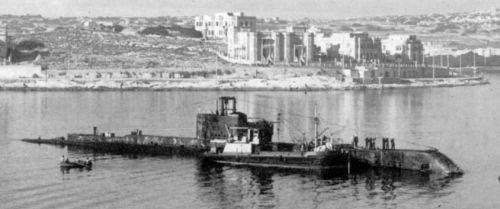- Author
- Selby, Gordon
- Subjects
- Biographies and personal histories, WWII operations
- Tags
-
- RAN Ships
- None noted.
- Publication
- December 2002 edition of the Naval Historical Review (all rights reserved)
During its 15 months of operations from Malta, Upholder was credited with the sinking of three submarines and one destroyer, and badly damaging one cruiser and one destroyer as well as sinking or damaging 19 supply ships totalling 119,000 tons, a record for any allied submarine during WWII. Its personnel were awarded a VC, a DSO and two bars, five DSCs, fifteen DSMs and two bars to the DSM as well as eighteen Mentioned in Dispatches. Its loss was withheld from the general public until 22nd August when the Lords of the Admiralty made a rare departure from their usual taciturn communiques by announcing:
“ . . . it is seldom proper for their Lordships to draw distinctions between different services rendered in the course of normal duty, but they take this opportunity of singling out those of the Upholder , under the command of Lieutenant Commander Wanklyn, for special mention. She was long employed against enemy communications in the central Mediterranean. Such was the standard of skill and daring set by Lieutenant Commander Wanklyn and the officers and men under him, that they and their ship became an inspiration not only to their own Flotilla but to the Fleet of which it was a part, and Malta where for so long the Upholder was based.”
P.39 sailed for its first patrol shortly after I joined it, and returned to harbour early in March without having sighted any enemy shipping. During the morning of 6th March 1942, the Luftwaffe launched a very heavy dive bombing attack on the Lazaretto submarine base, during which a direct hit was obtained on a fuelling lighter about 40 feet from P.39. The resulting explosion badly damaged P.39 – the starboard side of its pressure hull was concertinaed, 172 of its 224 battery cells were smashed and various pieces of machinery knocked from their bed plates. With the exception of the Commanding Officer, all the officers and crew were on board at the time but only one rating was injured. During that afternoon the boat was towed around to the dockyard, where it remained for the next three weeks whilst attempts were made to make it sufficiently seaworthy for passage to the UK for major repairs.
However, on 26th March, during a heavy air attack on the dockyard, a bomb dropped into the basin where P.39 and the Polish submarine Sokol were berthed and its trajectory took it underneath P.39, where it exploded and broke the submarine’s back. Over the next few days the crew were employed in stripping usable equipment from the wreck for use as spares, after which we joined up with the crew of P.36 and survivors of Pandora, both of which had been sunk in harbour on 1st April, to form relief crews to man other submarines of the flotilla whilst they were in harbour and their own crews went off to a rest camp. From about the middle of March, all operational submarines in harbour had been required to remain dived on the harbour bottom during daylight hours and to carry out maintenance or the loading of stores, etc. during the hours of darkness. This situation continued until towards the end of April, when the decision was taken to transfer the flotilla to the eastern end of the Mediterranean. All P.39 personnel were retained until the beginning of May to assist with the discharge of cargo from the submarine Olympus, which was being used at the time to carry essential stores and ammunition from Gibraltar to Malta. On completion of this, the officers and crew of P.39 were scheduled to take passage in Olympus on its return trip to Gibraltar and from there to be sent back to the UK to commission another new ‘U’ class submarine.

For store carrying purposes, one of Olympus’ three battery sections had been removed and the vacated space utilised for cargo carrying. On completion of de-storing this space would provide accommodation for passengers and it was there that the majority of junior ratings of P.39, together with one or two other personnel, were established, whilst the officers and senior ratings were accommodated in their respective messes. The unloading took two nights and Olympus sailed for Gibraltar at about 0330 on Friday 8th May 1942 with a total of 98 people on board.




